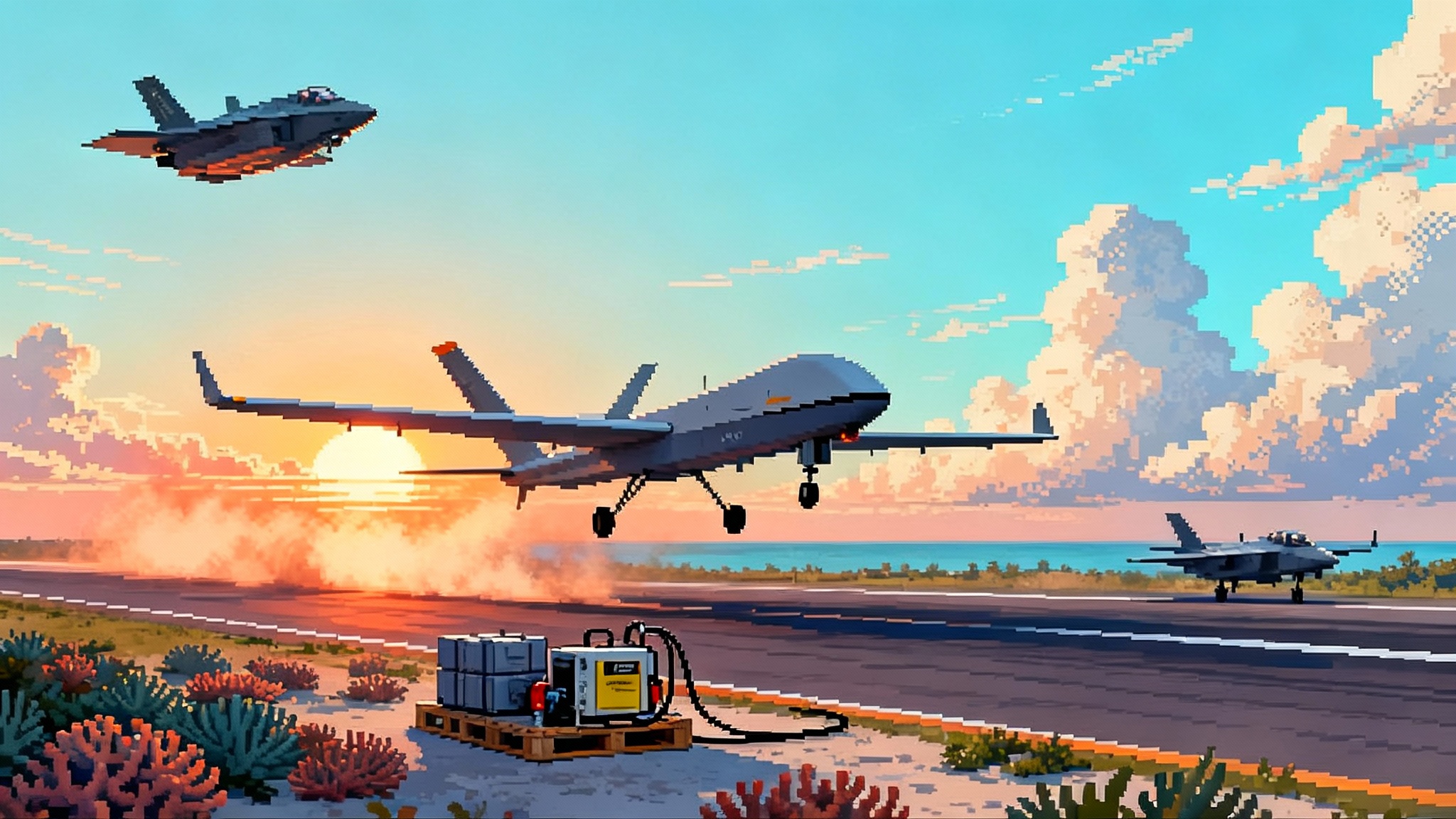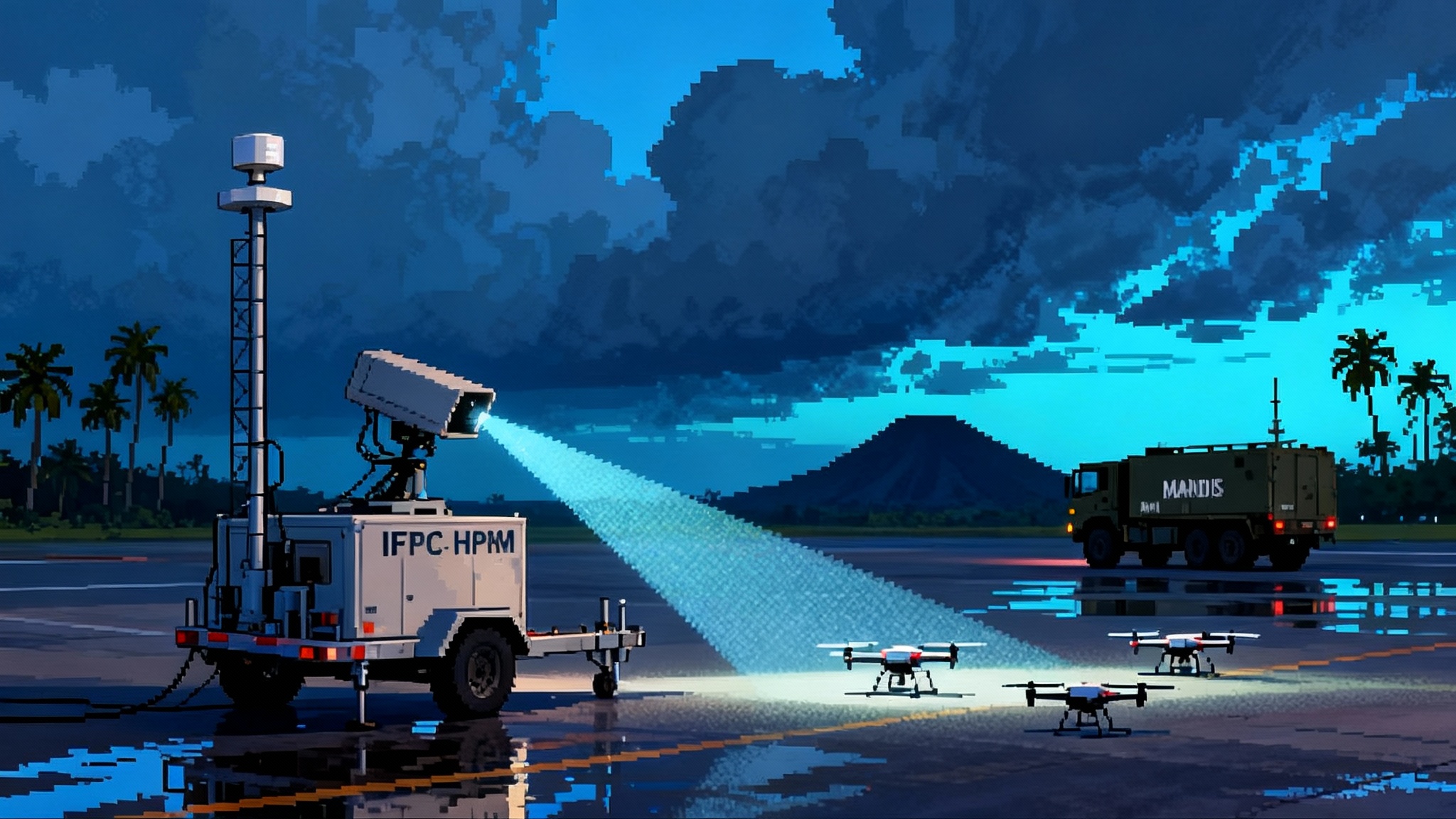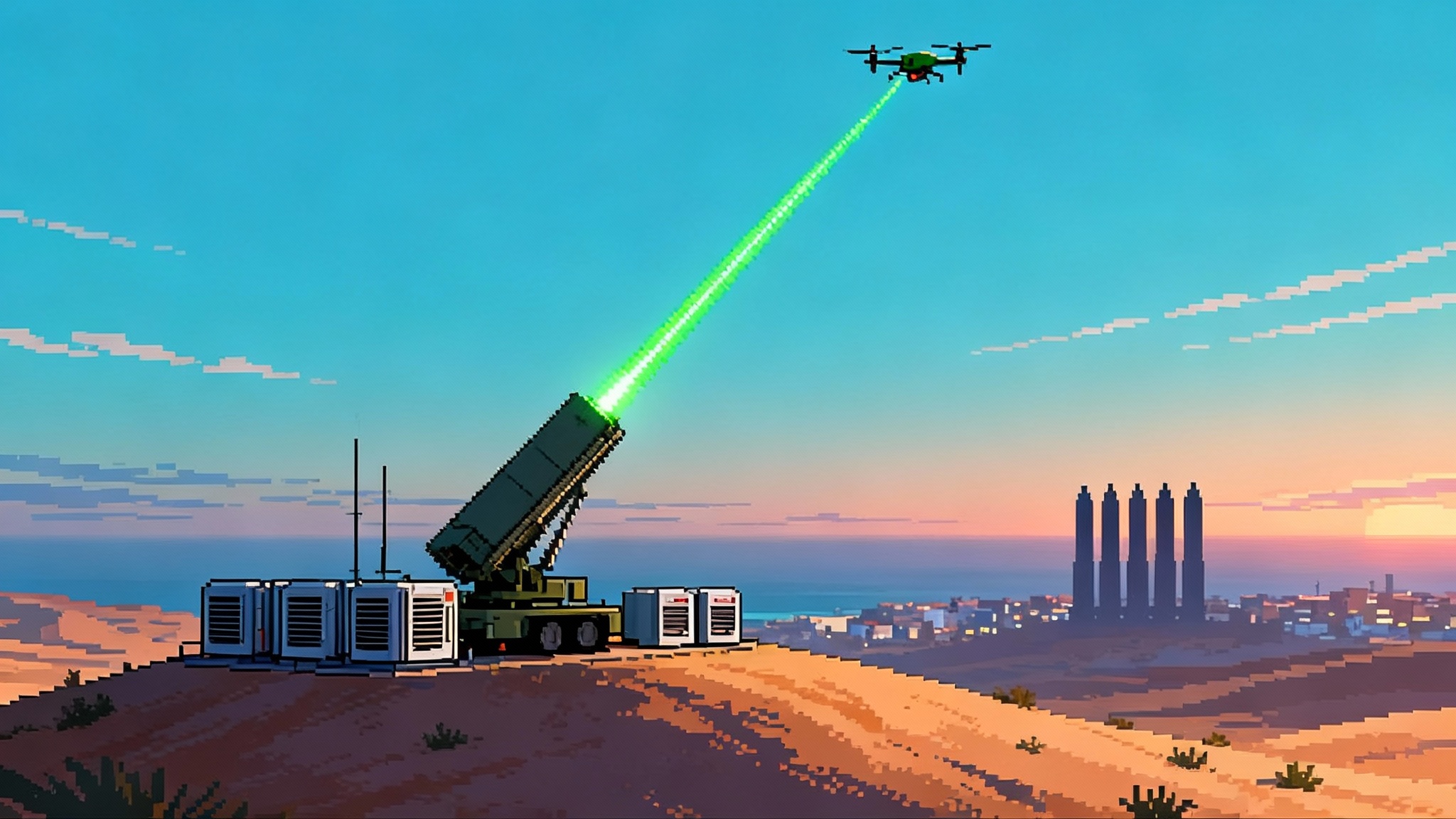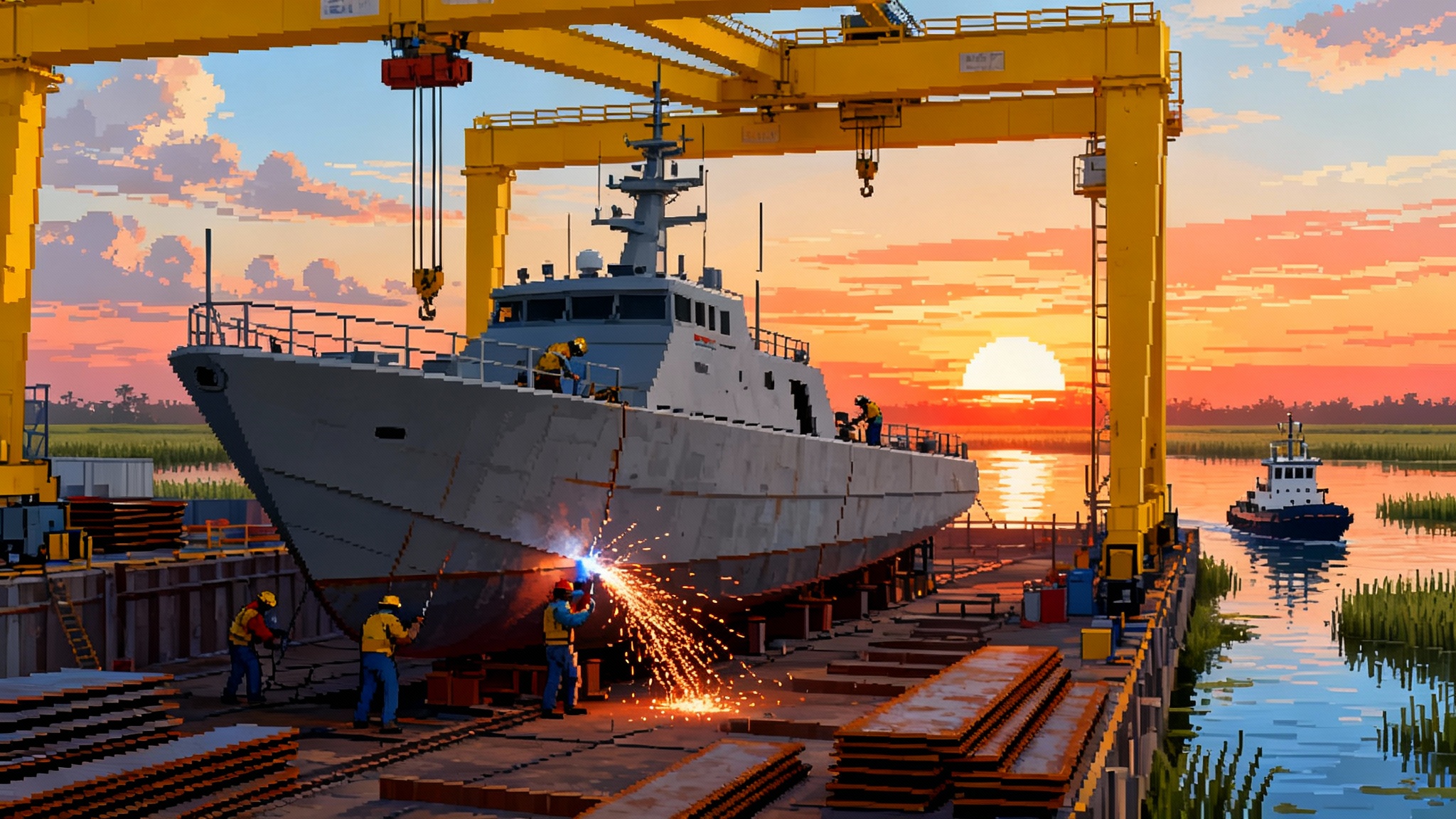Sentinel’s 2025 reset and U.S. ICBM modernization’s pivot
2025 turned Sentinel’s cost crisis into a structured reset. DoD recertified the program, motors fired at scale, and GAO flagged chokepoints. Here is what changed, why the ground segment is now the pacing item, and how to keep Minuteman III credible through the transition.

Why 2025 became the pivot point
For a decade the plan looked simple on paper. Retire the Nixon-era Minuteman III, field a new three-stage solid-fuel Sentinel, and refresh the buried network that lets launch crews communicate through nuclear war. Then 2024 exposed the true scale and cost of the work, and 2025 forced a reset. The Department of Defense recertified Sentinel after a critical Nunn–McCurdy breach and ordered a restructuring. Northrop Grumman and the Air Force notched hard data with full-scale stage one and stage two motor tests. And the Government Accountability Office released a September 2025 assessment that reads like a checklist of risks for a transition that will now stretch well into the 2030s.
The story of this year is not about whether Sentinel continues. It is about how the program changes, what slips to the right, and what must be shored up so the United States does not accept a gap in deterrence or break the budgets that fund it.
What the recertification really changed
The breach was not a rounding error. After a four-month review, DoD certified Sentinel to continue and rescinded the prior Milestone B, directing a restructure focused on the most expensive and uncertain part of the enterprise, the command and launch segment. The new independent cost estimate put acquisition at roughly 140.9 billion dollars and acknowledged several years of delay compared to the original 2029 initial operational capability target. The message was blunt. Modernize, but fix the management approach, the assumptions about reusing Cold War era infrastructure, and the contracting plan that ties industrial progress to civil works still in flux, as detailed in the DoD Sentinel recertification review.
The immediate effects in 2025 were visible. The Air Force paused portions of the launch facility standard design while re-baselining the command and launch segment. Program leaders also began framing a path back to a new Milestone B decision in 2027, which implies the deployment ramp and acceptance testing cadence shift into the early and middle 2030s rather than the late 2020s.
2025 motor tests: proof points amid turmoil
If 2025 delivered a policy reset, it also delivered propulsion proof. On March 6, the team conducted a full-scale static fire of the stage one solid rocket motor at Promontory, Utah, validating performance assumptions and data models that underpin guidance and structural loads analysis. On July 20, a stage two motor test at Arnold Engineering Development Complex ran in a vacuum chamber to capture thrust, burn profile, and thrust vector control characteristics at altitude. These tests matter beyond the optics. They give engineers anchored data for missile dynamics, improve confidence in guidance law margins, and help size thermal and structural factors that will flow into any revised performance envelope.
The propulsion line itself is a chokepoint. Large segmented solid motors require specialized casting facilities, careful propellant cure, and a workforce that must compete with other national programs. The team is building stage one and stage two motor sets in parallel and validating dynamic behavior across stages in modal testing. That keeps risk retirement moving while the ground segment is reworked, but it also highlights the need to protect motor casting and case supply from broader industrial shocks.
The hard part now: silos and launch facilities
The biggest surprise to non-specialists has been the depth of work at the missile fields. Early planning hinged on converting Minuteman silos and launch facilities. Field surveys and test conversions revealed a mosaic of unknowns. Legacy drawings do not capture decades of patchwork. Subsurface conditions vary by site. Radiation hardness standards are tighter, safety corridors are different, and modern security and cyber requirements add space, power, and routing needs that old structures cannot easily accommodate.
That is why the Air Force moved in 2025 toward a build-new approach for silos on predominantly Air Force owned real estate. Reusing sites, not the 55-year-old holes. It sounds drastic, but it removes a major source of cost and schedule volatility. New starts allow standardization, modular construction, and predictable interfaces for cabling, power, and cooling. The trade is concrete and steel at scale. Hundreds of new launch facilities, miles of trenching, and a construction program that looks less like a weapons buy and more like a civil infrastructure megaproject across five states.
This civil work is the pacing item for Sentinel now. Even if the missile is ready to fly, the fields must be ready to accept it. That means synchronized environmental work, easements, utility upgrades, road access sequencing, winter construction windows, and heavy equipment scheduling that must coexist with active Minuteman operations.
Hardened C3: rebuilding the nervous system
Launch crews and missiles only matter if they can receive valid orders through a network that survives the worst day. The command, control, and communications backbone is a tangle of hardened underground cables, cryptographic gear, survivable power and cooling, and interfaces to the broader nuclear command and control enterprise.
Upgrading this backbone is not a single purchase. It is a portfolio. It includes replacing miles of hardened intersite cabling with modern media, ensuring electromagnetic pulse and high-altitude effects do not disable routing equipment, and fielding new crypto that meets contemporary security standards without breaking compatibility with airborne command posts and higher headquarters. It also means refreshing launch control centers with modern displays, consoles, and cyber protections while keeping crews on station. This work scales with every site you touch, which is why the command and launch segment became the cost growth driver.
Related modernization trends matter here too. Space-based transport layers promise resilient links and alternative paths for data and tasking, as explored in SDA LEO mesh kill chains. Navigation resilience and timing assurance also need attention given persistent jamming and spoofing pressures, a theme in NATO PNT jamming rethink.
Supply chains under strain: motors and guidance
Two supply chains deserve special attention.
- Large solid rocket motors. There are only a handful of facilities that can cast and cure motors at Sentinel scale. The workforce is specialized, the ingredients are tightly controlled, and throughput must be carefully balanced against other national needs. The 2025 motor tests show the production pathway is real, but capacity needs to be shielded from shocks and spread across qualified lines where possible.
- Guidance. The 2024 slip in the first flight test schedule was tied to long-lead guidance computer parts. That illuminated a familiar problem for strategic programs, the fragility of radiation-hardened microelectronics, inertial sensors, and precision manufacturing. Qualifying second sources is slow by design in the nuclear enterprise, but standing up alternates is the only way to buy down risk while the ground segment catches up.
The right response in 2025 is to lock in multiyear buys for the longest-lead items, accelerate qualification of alternate inertial measurement units and rad-hard components, and preload inventories for test articles so range schedules do not starve on missing parts.
Revised timelines: from late 2020s into the 2030s
The net effect of the restructure is a timeline that now stretches into the 2030s. Program leaders are working toward a new Milestone B decision in 2027 to formalize the re-baselined cost and schedule. Initial operational capability is not a 2029 discussion anymore. Expect first wing conversion to slide into the early 2030s with subsequent wings following as construction and command and launch upgrades mature.
There is a second time reality in play. Even a well-executed Sentinel rollout will take years per wing, with one missile wing converted at a time while others remain on Minuteman. That means a long period where sustainment, testing, and training for two systems overlap. It also means a careful choreography of deactivations and activations so the force stays on alert without accepting unacceptable gaps in coverage.
Budget shock: how the bill reslices the Air Force
The 2024 certification that Sentinel is essential put a stake in the ground. The bill will be paid. The question is where the offsets come from. The restructure and new Milestone B in 2027 will drive a new program of record with updated out-year profiles. Expect the Air Force to protect Sentinel and the B-21 bomber while looking for elasticity in other modernization lines. Expect the command and launch segment to pull in more military construction and installation infrastructure funding and to demand sustained congressional support across multiple appropriations.
There is also the operating bill. Keeping Minuteman III viable is not free. The Air Force will continue to fund motor remanufacture, guidance and fuze work where needed, flight test support at Vandenberg, security upgrades, and unique nuclear surety activities. That spend increases as Sentinel slides right, which will be visible in operations and maintenance accounts. The other pressure point is people. The missile community must man crews, maintainers, civil engineers, and program offices for two systems for a decade or more.
Deterrence implications: credibility and flexibility
Deterrence is not a spreadsheet. It is a system of perceptions, signals, and real capabilities. The United States retains a safe, secure, and effective triad today. The risk of the Sentinel reset is not that the deterrent fails. The risk is that schedule volatility and ground segment churn erode flexibility, slow testing, and force unpleasant tradeoffs in training and maintenance windows.
Two confidence levers help. A credible test cadence for Minuteman III that demonstrates reliability and crew proficiency, and visible, measured progress on Sentinel milestones that matter, propulsion, and first-of-type construction. The public watchdog has already warned that a longer Minuteman run is likely and that the Air Force needs a formal transition risk management plan, as outlined in the GAO September 2025 assessment. Parallel progress across the triad also supports credibility, including sea-based advances highlighted in sea-based hypersonics hit the fleet.
Concrete options to de-risk schedule and keep Minuteman III viable
Here are realistic steps the department and Congress can take in 2025 and 2026 to manage schedule risk without compromising nuclear surety.
- Lock the ground segment design. Freeze the launch facility and launch control center standard designs as soon as the restructure closes, then hold change control ruthlessly. Every late change at a site ripples through hundreds of copies.
- Build new, standard, and modular. Treat silos and support buildings as a kit of parts that can be fabricated off site and installed with repeatable methods. Use identical trench profiles and vault layouts across bases to shorten learning curves for crews and contractors.
- Split contracts by work type. Separate heavy civil construction from specialized nuclear hardware so a delay in one does not halt the other. Use more unit price contracts for trenching and concrete where quantities scale with mileage.
- Put the Army Corps of Engineers on the critical path. Expand use of the Corps for design reviews, quality assurance, and surge construction management where their megaproject experience can de-risk execution.
- Pre-stage utilities and corridors. Pull forward power, communications ducts, and access roads that are independent of final silo internals. Early utility work shortens the interval between site turnover and missile emplacement.
- Protect solid rocket motor capacity. Fund multiyear procurement for motor ingredients and cases, maintain warm backup tooling, and qualify parallel lines where practical. The goal is to avoid a single point failure in casting or cure.
- Dual-source guidance components. Use Title III style incentives to qualify alternate suppliers for radiation-hardened processors and inertial sensors. Pre-buy a tranche of guidance parts for test cycles so schedule is not hostage to a late vendor.
- Strengthen Minuteman sustainment now. Extend motor remanufacture buys to keep industrial lines hot, stock critical spares subject to obsolescence, and stand up a reverse engineering cell to replace small batch parts under nuclear surety rules.
- Publish a Minuteman flight test roadmap. Commit to an annual or semiannual test cadence with scheduled windows, and synchronize with Sentinel ground work to avoid range and crew conflicts.
- Fix the workforce bottlenecks. Accelerate clearance processing, expand classified IT infrastructure for distributed engineering, and use retention incentives in the missile fields where experienced maintainers are in short supply.
- Guardrail budgets with a transition reserve. Set aside a modest contingency line inside the Sentinel ground segment to absorb weather, labor, or site surprises that will happen across hundreds of sites.
None of these actions remove the underlying complexity. They turn unknowns into knowns earlier, reduce the number of times field crews have to relearn a task, and shelter the most fragile supply chains from shock.
What to watch next
Three near-term markers will tell you whether the reset is working.
- The restructure closeout and new Milestone B plan, due to solidify in 2026 and decision in 2027. The content of that plan, especially the command and launch segmentation, will signal whether the program can hold a 2030s IOC.
- The first-of-type ground construction package at a missile wing. Watch how quickly utilities and foundations move and whether the standard designs stay frozen.
- The propulsion and guidance test drumbeat through 2026. Additional static fires, modal tests, hardware-in-the-loop runs, and the rescheduled flight test will show whether the industrial base keeps pace while civil work catches up.
2025 did not end the debate over how to modernize the land leg. It framed it. The United States can build a safer, more maintainable, and more flexible silo-based deterrent, but only if it accepts that the hard part is less the missile and more the miles of cable, concrete, and crew stations that have to be rebuilt while the old system stays on watch. The sooner the program locks its ground designs, protects its key suppliers, and funds a serious Minuteman sustainment bridge, the more likely this reset becomes a pivot rather than a pause.








